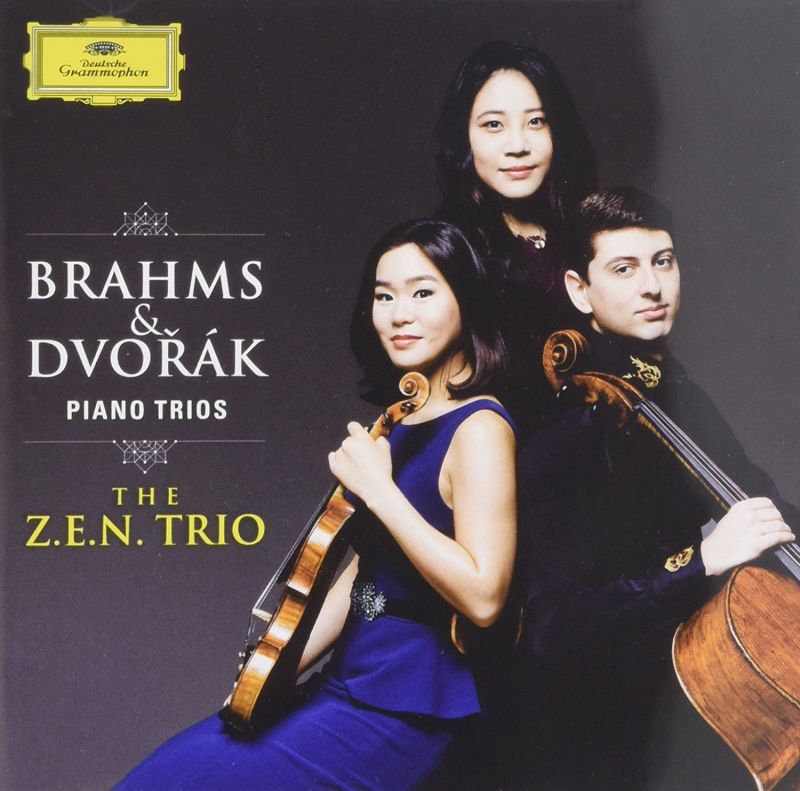DVOŘÁK; BRAHMS Piano Trios
View record and artist detailsRecord and Artist Details
Composer or Director: Johannes Brahms, Antonín Dvořák
Genre:
Chamber
Label: Deutsche Grammophon
Magazine Review Date: 04/2018
Media Format: CD or Download
Media Runtime: 70
Mastering:
DDD
Catalogue Number: 481 6292

Tracks:
| Composition | Artist Credit |
|---|---|
| Piano Trio No. 1 |
Johannes Brahms, Composer
Johannes Brahms, Composer Z.E.N. Trio |
| Piano Trio No. 4, 'Dumky' |
Antonín Dvořák, Composer
Antonín Dvořák, Composer Z.E.N. Trio |
| (21) Hungarian Dances, Movement: No. 6 in D flat |
Johannes Brahms, Composer
Johannes Brahms, Composer Z.E.N. Trio |
Author: Andrew Farach-Colton
The first movement of Brahms’s B major Trio conveys dynamism and breadth, making sense of both the Allegro con brio tempo designation and the music’s expansive character. The ZEN are not afraid to take chances, either – slowing slightly at 2'41" so the strings can lean into the yearning, espressivo melody. Indeed, throughout the entire work they move from passionate declaration to tender confessional in a manner that sounds utterly natural.
In Dvořák’s Dumky Trio, the ZEN present a colourful cast of characters. They tear into the opening, like new widows clawing at their clothing, then as Dvořák shuffles the work’s seemingly incongruous dramatic elements – the lyrical, lamenting, playful, folksy and fantastical – they deftly slip from one role to the next. And what a wealth of detail they survey. Note the tender spontaneity of the playing at the beginning of the third movement, the rapturous melancholy of the cello solo at 1'34" in the second and the husky vocal quality of the violin solo at 1'45" in the sixth. Zhang Zuo is marvellously sensitive to the variegated texture of the piano part from first note to last.
If only the ZEN paid greater attention to dynamic markings. Where’s the sense of a whispered, amorous conversation at the start of the Adagio in Brahms’s Trio, for example? Although the ZEN’s phrasing is beautifully sustained, they play what should be pianissimo as mezzo-forte, spoiling the effect. Perhaps the fault lies in part with the recording, which is a bit close and brightly lit, sometimes giving an unpleasant edge to the violin’s tone. It’s frustrating, in any case, given the outstanding quality of the performances.
Happily, there are no caveats regarding the encore: an arrangement of Brahms’s Sixth Hungarian Dance played with contagious joie de vivre.
Discover the world's largest classical music catalogue with Presto Music.

Gramophone Digital Club
- Digital Edition
- Digital Archive
- Reviews Database
- Full website access
From £8.75 / month
Subscribe
Gramophone Full Club
- Print Edition
- Digital Edition
- Digital Archive
- Reviews Database
- Full website access
From £11.00 / month
Subscribe
If you are a library, university or other organisation that would be interested in an institutional subscription to Gramophone please click here for further information.




